Reshma B Joined Clive Chin For a Transfer Session Of Original Master Tapes From The Randy’s Vaults
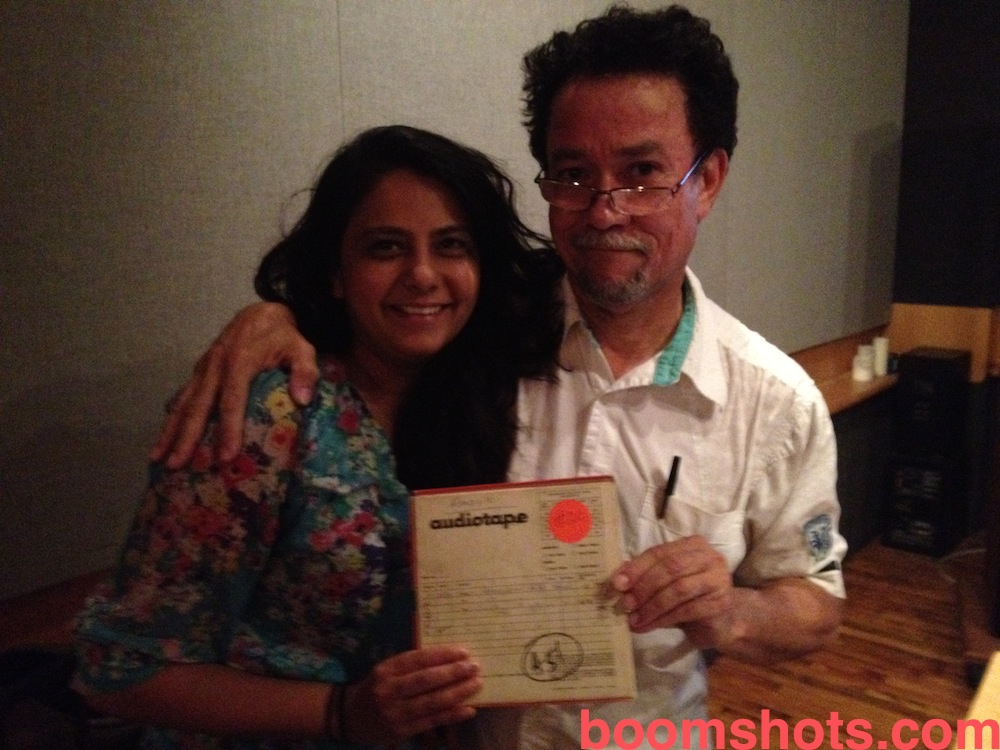
Boomshots UK Correspondent Reshma B appeared yesterday on “Front Row,” BBC Radio 4’s flagship arts show, to talk about the legacy of Randy’s Studio 17. She also premiered never-before-heard snippets of unreleased tracks from the Randy’s archives. You can listen to the broadcast here. But of course half the story has never been told. It all begins back on June 16 when legendary producer and head cornerstone Clive Chin announced the first of a treasure trove of unreleased recordings culled from the vaults of Randy’s Records. Comprising thousands of reels of audio tapes dating from the heyday of ska and early reggae (1968-1978), the Randy’s Vaults contain all the biggest names in Jamaican music—including Bob Marley, Peter Tosh, Dennis Brown, Gregory Isaacs, Alton Ellis, John Holt, Lord Creator, Count Machuki, U-Roy, The Skatalites, as well as the American R&B star Johnny Nash, to name a few. The opening of the Randy’s vaults represents a major event in the history of recorded music on par with Berry Gordy’s Motown Records or the famous Alan Lomax recordings at the Smithsonian Institute.
Pat McKay and Clive Chin Announce The Opening Of The Randy’s Archive
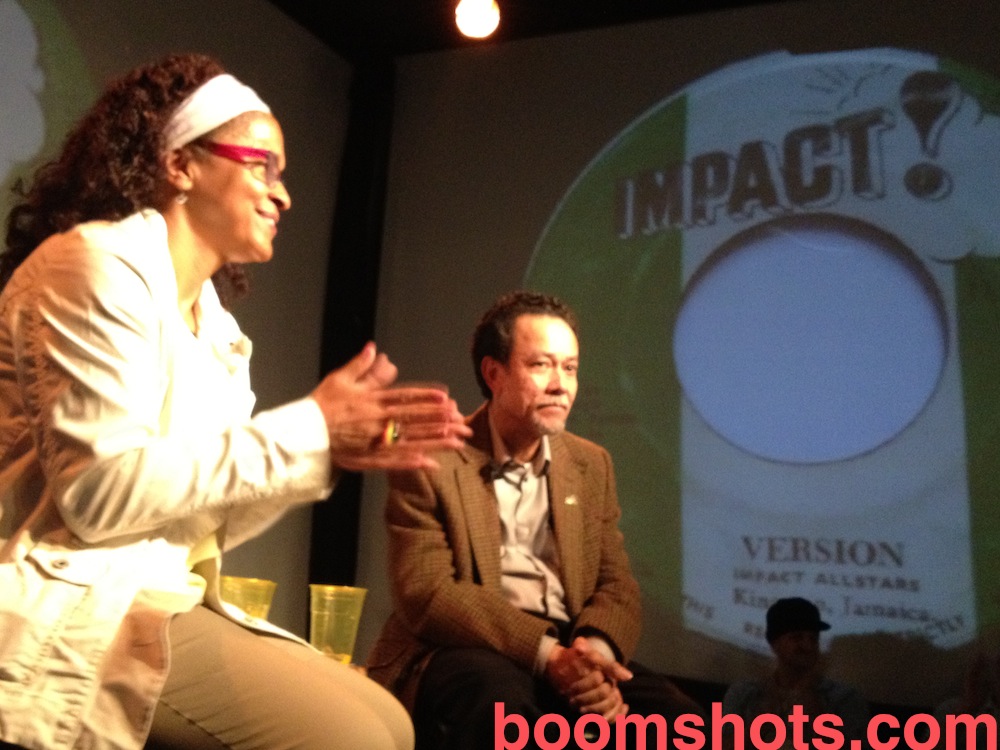
June 16 was also the birthday of Clive Chin’s son Joel, who inspired his father to dig into the family archives, but who was tragically murdered in Jamaica last August. It was fitting somehow that the first preview of this archive would be premiered at an intimate gathering on Joel’s birthday.
Clive’s father, the late Vincent Chin, got his start in the music business re-stocking jukeboxes all over the island. He accumulated a huge collection of vinyl by hanging onto the old records. This allowed him to establish Randy’s Records in the 1950s. His shop was named after an American R&B radio show, and much of the early inventory was American blues and jazz, but Chin would soon become one of the first Jamaican producers to showcase the island’s musical talent.
In 1961 he moved his business to the heart of downtown Kingston, at 17 North Parade, and soon after he opened a small recording studio upstairs which would become one of the island’s most important creative centers. In 1962 Vincent Chin recorded his first big hit record, “Independent Jamaica” by the Trinidad-born singer Kenrick Patrick, better known as Lord Creator. The rousing ska tune was released just months before Jamaican officially declared its independence from Great Britain, in August 1962. The song was popular enough to be released on Chris Blackwell’s fledgling Island Records imprint in the UK.
Randy’s would go on to become a nerve center for the creation and distribution of Jamaican music, hosting sessions by all of the most important singers, players, and producers in Jamaica. On any given day you could find all the top musicians and vocalists in Jamaica on a strip of road known as “Idlers Rest.” The Skatalites recorded much of their most important work at Randy’s Studio. Engineer extraordinaire Errol Thompson recorded the first dub album at Randys, and Lee “Scratch” Perry was a regular at Randy’s until he established his own Black Ark studio.
This was a time when future superstar Bob Marley was just one of the many stellar talents who would gather outside of Randy’s studio on a daily basis to lay down tracks. Although he would gain worldwide fame with his rude boy ska cuts and his Rastafarian reggae songs, he recorded all types of music at Randy’s, from a cover of The Archie’s bubble-gum pop hit “Sugar Sugar” to the roots rock sound of “Soul Rebel.”
The studio was so popular that it was in use almost around the clock, with Vincent Chin’s wife Patricia acting as A&R—selecting which songs to release as singles—as well as minding the books for all the different musicians and producers who worked at Randy’s. Most of the music that Vincent and Clive Chin recorded was never pressed up as singles. As Clive Chin explained to Reshma B in an exclusive interview, most of those tapes simply went on the shelf and accumulated into a vast treasure trove of music. The songs premiered on Radio 4 yesterday include John Holt’s “Miracle” (a cover of the Sam Cooke classic), Dennis Brown’s “When You Get Right Down To It” (an unfinished but irreplaceable gem), and Lord Creator’s “Kissing,” That vintage love song, which has been updated with a female vocals by Nikko, will be officially released later this year, but it got its first airplay yesterday on Front Row.
Among the many rare and unusual finds from the Randy’s Vault are Peter Tosh’s cover of Bobby Russell’s “Little Green Apples,” a Nashville classic recorded by Patti Page and Roger Miller—and later reinterpreted by Dennis Brown in reggae style for Coxsone Dodd. But Tosh’s version—propelled by African-style hand-drumming—is a revelation. Similarly unexpected is “Whistling Jane,” a irresistible 1969 dance cut featuring the great Jackie Mittoo on organ and Peter Tosh playing guitar and whistling the lead. Clive Chin and his partner Billy Szeflinski invited Reshma B to watch these songs being pulled directly off the original master session tapes this past week in Brooklyn New York.
These tapes have survived decades of neglect and, following a close call with Hurricane Gilbert in 1988, they were transported to Queens, New York, with support from the Experience Music Project, a museum of popular music established in in Seattle Washington by Microsoft cofounder Paul Allen. A selection of 50 songs was released in 2008 to mark the 50th anniversary of Randy’s Records, but the lions’ share has not seen the light of day until now.
“It was like stepping into a time machine,” said Reshma B after witnessing these historic tapes being played and for the first time in 40 years. “You could hear all the banter between the musicians in the studio. What a privilege.” Although the glue on some of the splices had detoriated, causing tapes to pop from time to time, the team at Blackler Mastering in Brooklyn was more than capable of repairing the splices, and the tapes themselves sounded great. Stay tuned for a video.
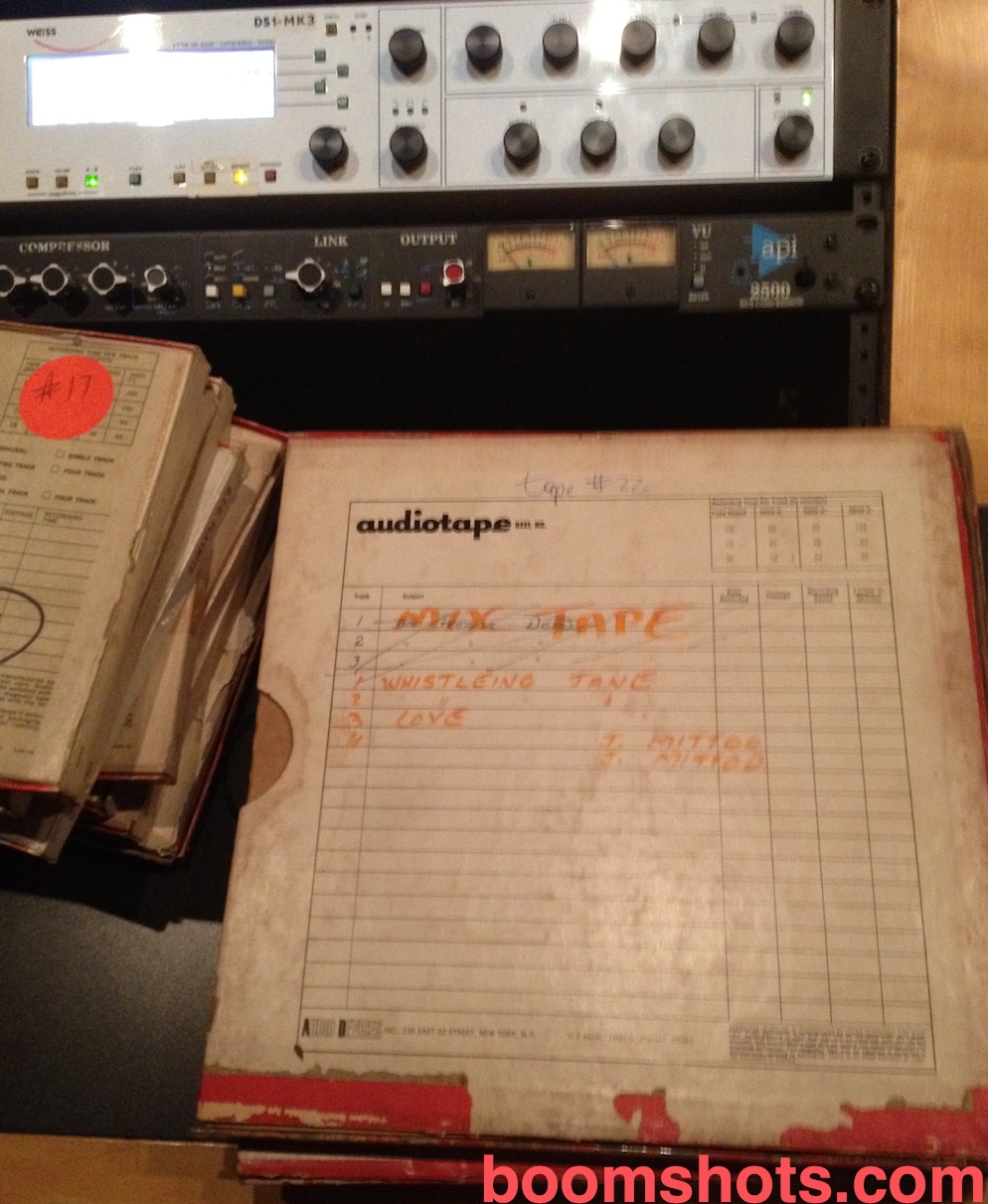
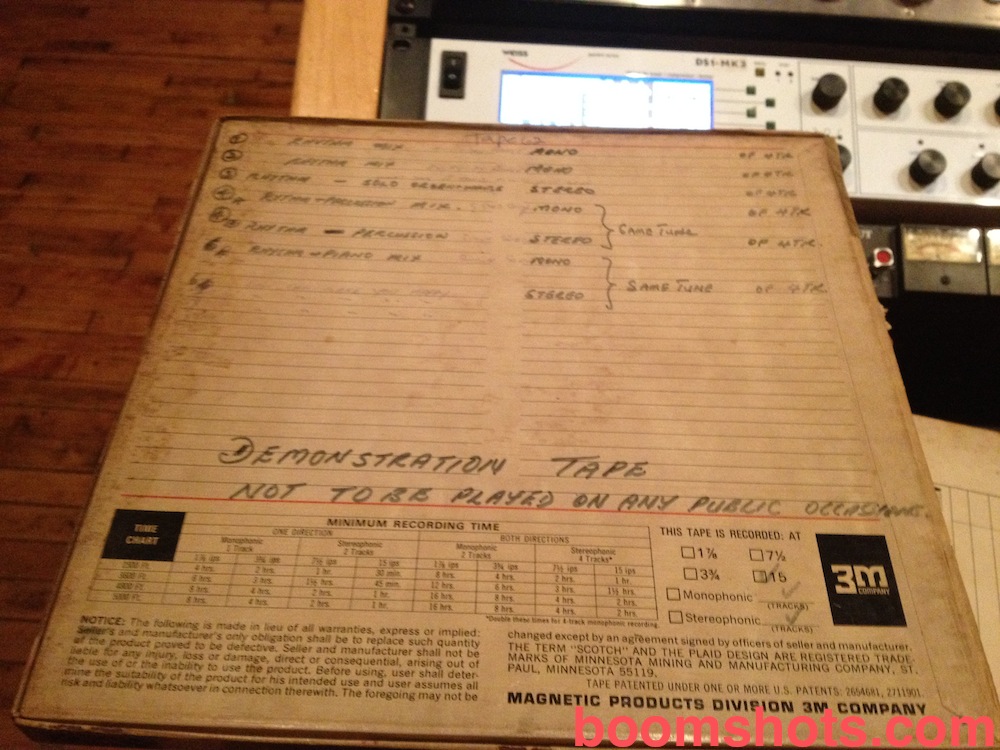
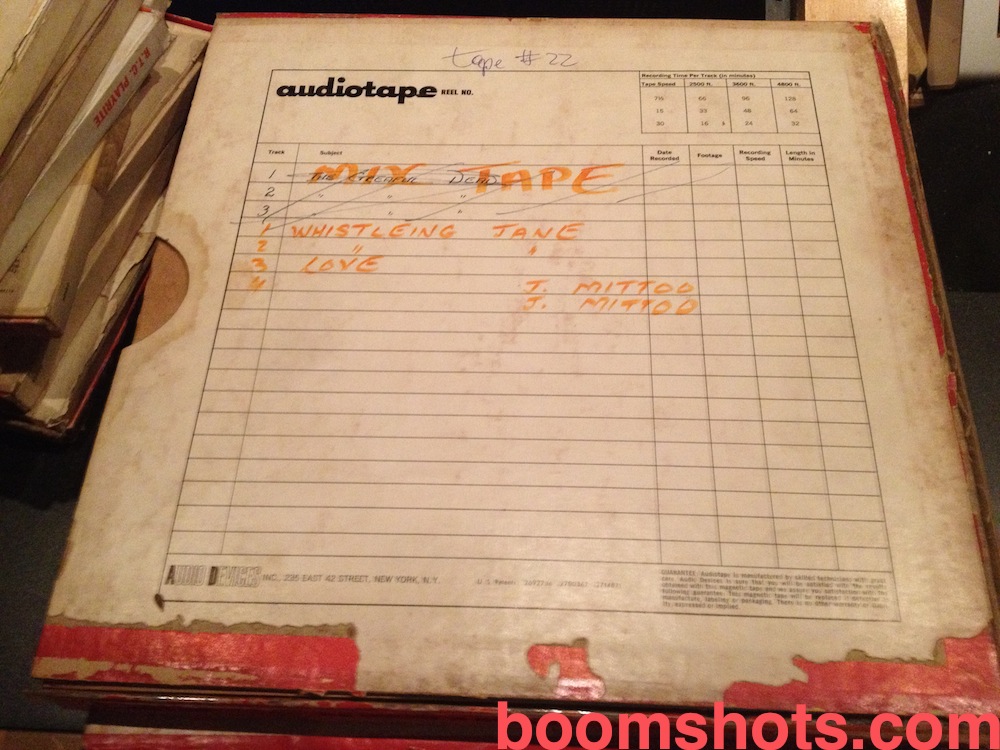

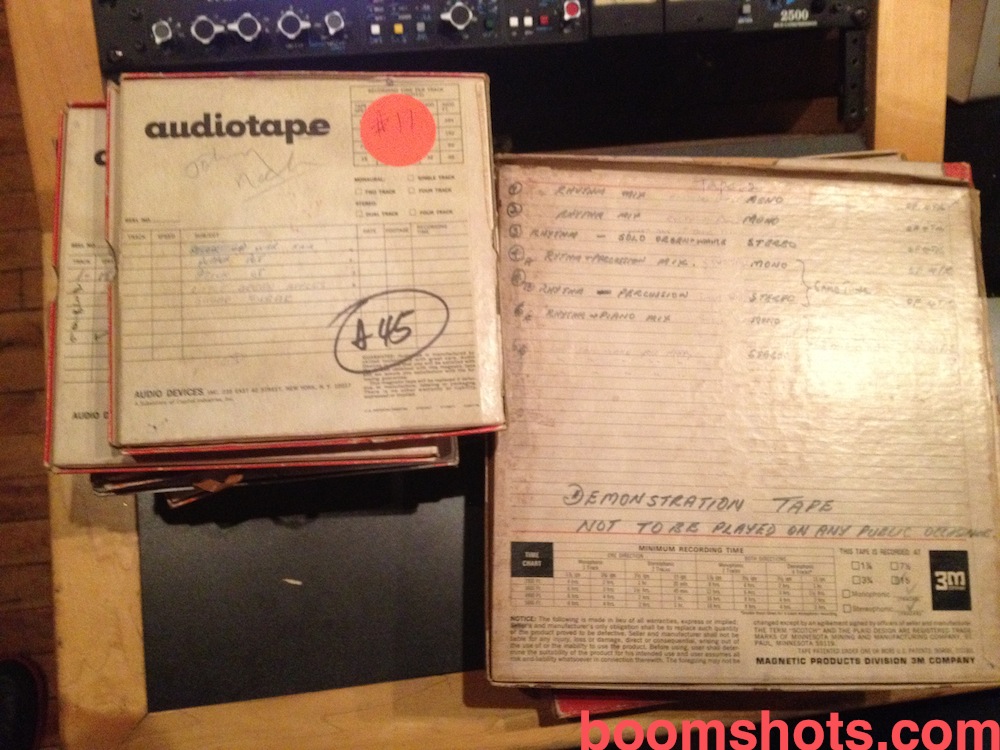
Leave a Reply